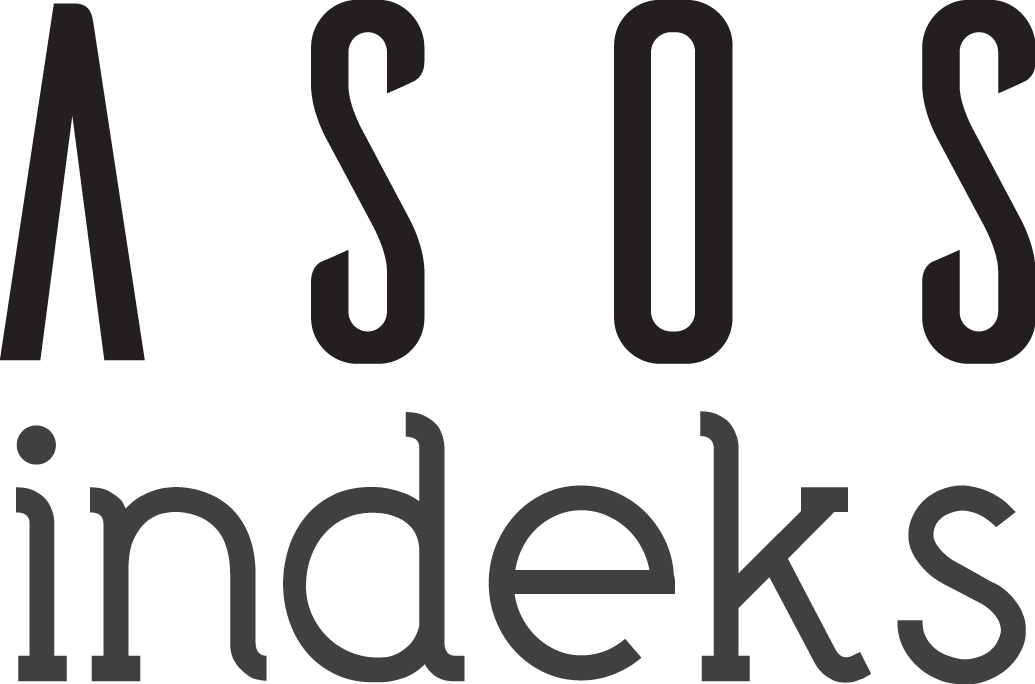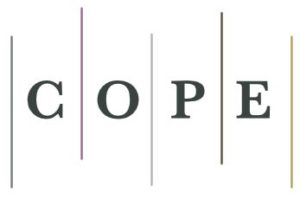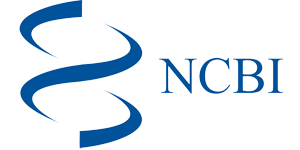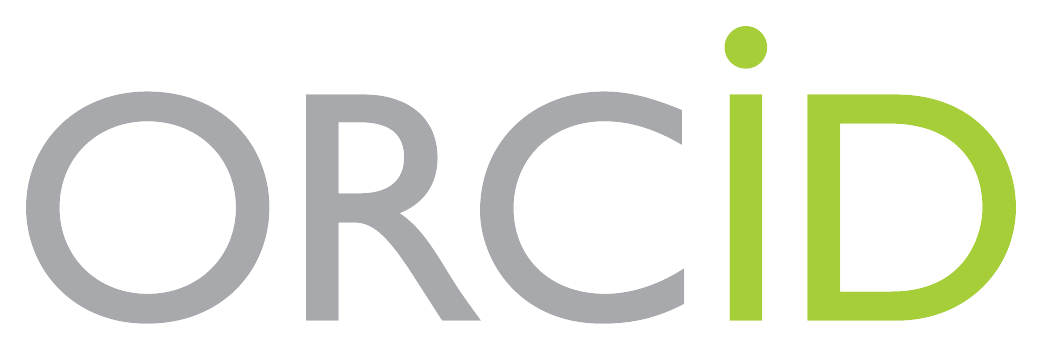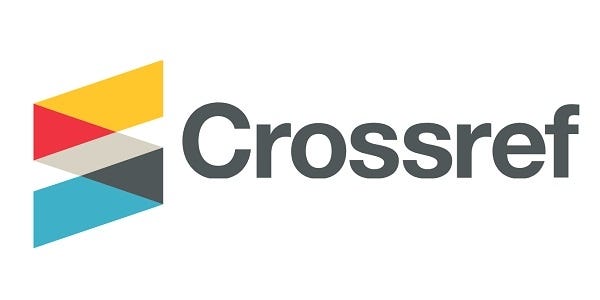Abstract
Aims: Our aim in this study was to evaluate the effectiveness of the modified nutrition risk score (mNUTRIC) score in predicting clinical outcomes and mortality in patients admitted to intensive care units (ICUs).
Methods: This study was designed as a prospective observational cohort study. It was conducted in patients admitted to the Anesthesiology and Reanimation ICUs of Pamukkale University Hospital. The primary outcome measure of this study was the comparison of mNUTRIC scores at days 2, 7, and 12 between survivors and non-survivors. Secondary outcome measures included the effectiveness of predicting the necessity for invasive mechanical ventilation (IMV), hemodialysis, and vasopressor or inotropic support. Additionally, the study examined the impact of nutritional adequacy (categorized as hypocaloric or hypercaloric) and protein intake levels (classified as low, medium and high) on mortality among patients. Student’s T test or Mann-Whitney U test was used for comparisons involving continuous variables, and the Chi-square test was used for categorical variables.
Results: The mNUTRIC scores of 176 patients who participated in the study were meticulously assessed. In this context, mNUTRIC scores were computed for the entirety of the patient cohort (n=176) on the second day for 91 patients on the seventh day, and for forty-six patients on the twelfth day on the second day the APACHE II, SOFA, and mNUTRIC scores exhibited significantly elevated values in patients who succumbed to their conditions (22.60±7.94, 6.81±3.03, and 5.00±2.03) in contrast to those who survived (16.99±5.05, 3.94±2.26, and 3.32±1.48, all p<0.001). On the seventh day these scores persisted at heightened levels in deceased patients (24.38±7.07, 6.82±3.52, and 5.00±1.61) relative to survivors (18.06±4.70, 3.85±2.10, and 3.50±1.58, all p<0.001). On the twelfth day the APACHE II, SOFA, and mNUTRIC scores recorded were 25.61±7.18, 7.00±3.57, and 5.52±1.81 for patients who did not survive, whereas survivors had scores of 18.70±5.88, 4.39±1.75, and 3.39±2.02 (p=0.001, p=0.008, p<0.001, respectively).
Conclusion: Statistically significant differences were observed in the APACHE II, SOFA, and mNUTRIC scores on days 2, 7, and 12 between surviving and deceased patients. However, it was observed that nutritional adequacy and protein intake were not determinants that directly affected the mortality risk in critically ill patients with high mNUTRIC scores.
Thanks
NONE
References
- Park S, Park SH, Kim Y, et al. Optimal nutritional support strategy based on the association between modified NUTRIC score and 28-day mortality in critically ill patients: a prospective study. Nutrients. 2023;15(11):2465. doi:10.3390/nu15112465
- Chada RR, Chidrawar S, Goud BA, Maska A, Medanki R, Nagalla B. Association between nutrition delivery, modified nutrition risk in critically III score, and 28-day mortality. Nutr Clin Pract. 2021;36(5): 1020-1033. doi:10.1002/ncp.10673
- Blaauw L, Schoonees A, Robertson N, Visser J. The impact of guideline recommended protein intake on mortality and length of intensive care unit and hospital stay in critically ill adults: a systematic review. Clin Nutr ESPEN. 2024;61:356-368. doi:10.1016/j.clnesp.2024.04.003
- Bhasin A, Huang L, Shieh MS, Pekow P, Lindenauer PK, Lagu T. Malnutrition in hospitalized adults in the United States, 2016-2019. J Hosp Med. 2024;19(12):1113-1121. doi:10.1002/jhm.13456
- Pellathy TP, Pinsky MR, Hravnak M. Intensive care unit scoring systems. Crit Care Nurs. 2021;41(4):54-64. doi:10.4037/ccn2021613
- Shahi S, Paneru H, Ojha R, Karn R, Rajbhandari R, Gajurel BP. SOFA and APACHE II scoring systems for predicting outcome of neurological patients admitted in a tertiary hospital intensive care unit. Ann Med Surg (Lond). 2024;86(4):1895-1900. doi:10.1097/MS9.0000000000001734
- Evran T, Serin S, Gürses E, Sungurtekin H. Various scoring systems for predicting mortality in intensive care unit. Niger J Clin Pract. 2016;19(4): 530-534. doi:10.4103/1119-3077.183307
- Akavipat P, Thinkhamrop J, Thinkhamrop B, Sriraj W. Acute physiology and chronic health evaluation (APACHE) II score - the clinical predictor in neurosurgical intensive care unit. Acta Clin Croat. 2019;58(1):50-56. doi:10.20471/acc.2019.58.01.07
- Hany A, Elsenousy T, Abd Elrahman A, Nabil S. Nurses’ performance in using the APACHE score: Its effect on outcomes of patients with cardiac surgery. J Med Life. 2023;16(7):1070-1078. doi:10.25122/jml-2023-0059
- Oda S, Hirasawa H, Sugai T, et al. Comparison of sepsis-related organ failure assessment (SOFA) score and CIS (cellular injury score) for scoring of severity for patients with multiple organ dysfunction syndrome (MODS). Int Care Med. 2000;26(12):1786-1793. doi:10.1007/s001340000710
- Hansen CK, Issa M, Balaji L, Du A, Grossestreuer AV, Donnino M. Performance of the APACHE II and SOFA scores in diabetic ketoacidosis. J Int Care Med. 2022;37(6):715-720. doi:10.1177/08850666211023718
- Heyland DK, Dhaliwal R, Jiang X, Day AG. Identifying critically ill patients who benefit the most from nutrition therapy: the development and initial validation of a novel risk assessment tool. Crit Care. 2011; 15(6):R268. doi:10.1186/cc10546
- Rahman A, Hasan RM, Agarwala R, Martin C, Day AG, Heyland DK. Identifying critically-ill patients who will benefit most from nutritional therapy: further validation of the “modified NUTRIC” nutritional risk assessment tool. Clin Nutr. 2016;35(1):158-162. doi:10.1016/j.clnu.2015. 01.015
- Zhang P, Bian Y, Tang Z, Wang F. Use of nutrition risk in critically Ill (NUTRIC) scoring system for nutrition risk assessment and prognosis prediction in critically ill neurological patients: a prospective observational study. J Parenter Enteral Nutr. 2021;45(5):1032-1041. doi: 10.1002/jpen.1977
- Barea-Mendoza JA, Llompart-Pou JA, Pérez-Bárcena J, et al. External validation of the Glasgow Coma Scale-Pupils in patients with severe head injury. Validación externa de la Escala de Coma de Glasgow con valoración pupilar en pacientes con traumatismo craneoencefálico grave. Emergencias. 2023;35(1):39-43. doi:10.55633/s3me/E097.2023
- Knaus WA, Zimmerman JE, Wagner DP, Draper EA, Lawrence DE. APACHE-acute physiology and chronic health evaluation: a physiologically based classification system. Crit Care Med. 1981;9(8):591-597. doi:10.1097/00003246-198108000-00008
- Peres Bota D, Melot C, Lopes Ferreira F, Nguyen Ba V, Vincent JL. The multiple organ dysfunction score (MODS) versus the sequential organ failure assessment (SOFA) score in outcome prediction. Intensive Care Med. 2002;28(11):1619-1624. doi:10.1007/s00134-002-1491-3
- Singer P, Blaser AR, Berger MM, et al. ESPEN practical and partially revised guideline: Clinical nutrition in the intensive care unit. Clin Nutr. 2023;42(9):1671-1689. doi:10.1016/j.clnu.2023.07.011
- Kumar S, Gattani SC, Baheti AH, Dubey A. Comparison of the performance of APACHE II, SOFA, and mNUTRIC scoring systems in critically Ill patients: a 2-year cross-sectional Study. Indian J Crit Care Med. 2020;24(11):1057-1061. doi:10.5005/jp-journals-10071-23549
- Hai PD, Viet Hoa LT. The prognostic accuracy evaluation of mNUTRIC, APACHE II, SOFA, and SAPS 2 scores for mortality prediction in patients with sepsis. Crit Care Res Pract. 2022;2022:4666594. doi:10. 1155/2022/4666594
- Kalaiselvan MS, Renuka MK, Arunkumar AS. Use of nutrition risk in critically ill (NUTRIC) score to assess nutritional risk in mechanically ventilated patients: a prospective observational study. Indian J Crit Care Med. 2017;21(5):253-256. doi:10.4103/ijccm.IJCCM_24_17
- Mukhopadhyay A, Henry J, Ong V, et al. Association of modified NUTRIC score with 28-day mortality in critically ill patients. Clin Nutr. 2017;36(4):1143-1148. doi:10.1016/j.clnu.2016.08.004
- Wang N, Wang MP, Jiang L, Du B, Zhu B, Xi XM. Association between the modified nutrition risk in critically ill (mNUTRIC) score and clinical outcomes in the intensive care unit: a secondary analysis of a large prospective observational study. BMC Anesthesiol. 2021;21(1):220. doi:10.1186/s12871-021-01439-x
- Verma P, Kumar S, Phate N, et al. Modified nutrition risk in critically ill (m-NUTRIC) score to assess nutritional status and outcome in patients with chronic kidney disease: 2-year cross-sectional study. Int J Nutr Pharmacol Neurol Dis. 2023;13(3):152-157. doi:10.4103/ijnpnd.ijnpnd_9_23
- Mahmoodpoor A, Sanaie S, Sarfaraz T, et al. Prognostic values of modified NUTRIC score to assess outcomes in critically ill patients admitted to the intensive care units: prospective observational study. BMC Anesthesiol. 2023;23(1):131. doi:10.1186/s12871-023-02086-0
- Mendes R, Policarpo S, Fortuna P, et al. Nutritional risk assessment and cultural validation of the modified NUTRIC score in critically ill patients-A multicenter prospective cohort study. J Crit Care. 2017;37:45-49. doi:10.1016/j.jcrc.2016.08.001
- de Vries MC, Koekkoek WK, Opdam MH, van Blokland D, van Zanten AR. Nutritional assessment of critically ill patients: validation of the modified NUTRIC score. Eur J Clin Nutr. 2018;72(3):428-435. doi:10. 1038/s41430-017-0008-7
- Chourdakis M, Grammatikopoulou MG, Day AG, Bouras E, Heyland DK. Are all low-NUTRIC-score patients the same? Analysis of a multi-center observational study to determine the relationship between nutrition intake and outcome. Clin Nutr. 2019;38(6):2783-2789. doi:10. 1016/j.clnu.2018.12.006
Abstract
Amaç
Bu çalışmada amacımız Yoğun Bakım Üniteleri’ne (YBÜ) yatırılan hastalarda klinik sonuçları ve mortaliteyi tahmin etmede Modifiye Beslenme Risk Skoru (mNUTRIC) skorunun etkinliğini değerlendirmektir.
Yöntem
Bu çalışma prospektif gözlemsel kohort çalışması olarak tasarlanmıştır. Pamukkale Üniversitesi Hastanesi Anesteziyoloji ve Reanimasyon YBÜ’lerine yatırılan hastalarda yürütülmüştür. Bu çalışmanın birincil sonuç ölçütü, sağ kalanlar ve sağ kalamayanlar arasında 2., 7. ve 12. günlerdeki mNUTRIC skorlarının karşılaştırılmasıdır. İkincil sonuç ölçütleri arasında invaziv mekanik ventilasyon (IMV), hemodiyaliz ve vazopressör veya inotropik destek gerekliliğini tahmin etme etkinliği yer almıştır. Ayrıca çalışmada beslenme yeterliliğinin (hipokalorik veya hiperkalorik olarak kategorize edilmiş) ve protein alım düzeylerinin (düşük veya yüksek olarak sınıflandırılmış) hastalarda mortalite üzerindeki etkisi incelenmiştir. Sürekli değişkenleri içeren karşılaştırmalarda Student t-testi veya Mann-Whitney U testi, kategorik değişkenlerde ise Ki-Kare testi kullanıldı.
Bulgular
Çalışmaya katılan 176 hastanın mNUTRIC skorları titizlikle değerlendirildi. Bu bağlamda, tüm hasta kohortunun (n=176) ikinci gün mNUTRIC skorları hesaplandı, yedinci gün 91 hasta ve on ikinci gün 46 hasta için APACHE II, SOFA ve mNUTRIC skorları, hastalıklarına yenik düşen hastalarda anlamlı derecede yüksek değerler gösterdi (22,60±7,94, 6,81±3,03 ve 5,00±2,03), hayatta kalanlara göre ise anlamlı derecede yüksek değerler gösterdi (16,99±5,05, 3,94±2,26 ve 3,32±1,48, hepsi p<0,001). Yedinci günde bu skorlar ölen hastalarda (24.38±7.07, 6.82±3.52 ve 5.00±1.61) sağ kalanlara (18.06±4.70, 3.85±2.10 ve 3.50±1.58, hepsi p<0.001) göre yüksek seviyelerde seyretti. On ikinci günde APACHE II, SOFA ve mNUTRIC skorları hayatta kalmayan hastalar için 25.61±7.18, 7.00±3.57 ve 5.52±1.81 iken sağ kalanların skorları sırasıyla 18.70±5.88, 4.39±1.75 ve 3.39±2.02 idi (sırasıyla p=0.001, p=0.008, p<0.001). Sonuç APACHE II, SOFA ve mNUTRIC skorlarında hayatta kalan ve ölen hastalar arasında 2., 7. ve 12. günlerde istatistiksel olarak anlamlı farklılıklar gözlemlendi. Ancak, beslenme yeterliliği ve protein alımının yüksek mNUTRIC skorlarına sahip kritik hastalarda ölüm riskini doğrudan etkileyen belirleyiciler olmadığı gözlemlendi.
Anahtar kelimeler: mNUTRIC, Yoğun Bakım Ünitesi, Ölüm, Morbidite, Puanlama Sistemi
References
- Park S, Park SH, Kim Y, et al. Optimal nutritional support strategy based on the association between modified NUTRIC score and 28-day mortality in critically ill patients: a prospective study. Nutrients. 2023;15(11):2465. doi:10.3390/nu15112465
- Chada RR, Chidrawar S, Goud BA, Maska A, Medanki R, Nagalla B. Association between nutrition delivery, modified nutrition risk in critically III score, and 28-day mortality. Nutr Clin Pract. 2021;36(5): 1020-1033. doi:10.1002/ncp.10673
- Blaauw L, Schoonees A, Robertson N, Visser J. The impact of guideline recommended protein intake on mortality and length of intensive care unit and hospital stay in critically ill adults: a systematic review. Clin Nutr ESPEN. 2024;61:356-368. doi:10.1016/j.clnesp.2024.04.003
- Bhasin A, Huang L, Shieh MS, Pekow P, Lindenauer PK, Lagu T. Malnutrition in hospitalized adults in the United States, 2016-2019. J Hosp Med. 2024;19(12):1113-1121. doi:10.1002/jhm.13456
- Pellathy TP, Pinsky MR, Hravnak M. Intensive care unit scoring systems. Crit Care Nurs. 2021;41(4):54-64. doi:10.4037/ccn2021613
- Shahi S, Paneru H, Ojha R, Karn R, Rajbhandari R, Gajurel BP. SOFA and APACHE II scoring systems for predicting outcome of neurological patients admitted in a tertiary hospital intensive care unit. Ann Med Surg (Lond). 2024;86(4):1895-1900. doi:10.1097/MS9.0000000000001734
- Evran T, Serin S, Gürses E, Sungurtekin H. Various scoring systems for predicting mortality in intensive care unit. Niger J Clin Pract. 2016;19(4): 530-534. doi:10.4103/1119-3077.183307
- Akavipat P, Thinkhamrop J, Thinkhamrop B, Sriraj W. Acute physiology and chronic health evaluation (APACHE) II score - the clinical predictor in neurosurgical intensive care unit. Acta Clin Croat. 2019;58(1):50-56. doi:10.20471/acc.2019.58.01.07
- Hany A, Elsenousy T, Abd Elrahman A, Nabil S. Nurses’ performance in using the APACHE score: Its effect on outcomes of patients with cardiac surgery. J Med Life. 2023;16(7):1070-1078. doi:10.25122/jml-2023-0059
- Oda S, Hirasawa H, Sugai T, et al. Comparison of sepsis-related organ failure assessment (SOFA) score and CIS (cellular injury score) for scoring of severity for patients with multiple organ dysfunction syndrome (MODS). Int Care Med. 2000;26(12):1786-1793. doi:10.1007/s001340000710
- Hansen CK, Issa M, Balaji L, Du A, Grossestreuer AV, Donnino M. Performance of the APACHE II and SOFA scores in diabetic ketoacidosis. J Int Care Med. 2022;37(6):715-720. doi:10.1177/08850666211023718
- Heyland DK, Dhaliwal R, Jiang X, Day AG. Identifying critically ill patients who benefit the most from nutrition therapy: the development and initial validation of a novel risk assessment tool. Crit Care. 2011; 15(6):R268. doi:10.1186/cc10546
- Rahman A, Hasan RM, Agarwala R, Martin C, Day AG, Heyland DK. Identifying critically-ill patients who will benefit most from nutritional therapy: further validation of the “modified NUTRIC” nutritional risk assessment tool. Clin Nutr. 2016;35(1):158-162. doi:10.1016/j.clnu.2015. 01.015
- Zhang P, Bian Y, Tang Z, Wang F. Use of nutrition risk in critically Ill (NUTRIC) scoring system for nutrition risk assessment and prognosis prediction in critically ill neurological patients: a prospective observational study. J Parenter Enteral Nutr. 2021;45(5):1032-1041. doi: 10.1002/jpen.1977
- Barea-Mendoza JA, Llompart-Pou JA, Pérez-Bárcena J, et al. External validation of the Glasgow Coma Scale-Pupils in patients with severe head injury. Validación externa de la Escala de Coma de Glasgow con valoración pupilar en pacientes con traumatismo craneoencefálico grave. Emergencias. 2023;35(1):39-43. doi:10.55633/s3me/E097.2023
- Knaus WA, Zimmerman JE, Wagner DP, Draper EA, Lawrence DE. APACHE-acute physiology and chronic health evaluation: a physiologically based classification system. Crit Care Med. 1981;9(8):591-597. doi:10.1097/00003246-198108000-00008
- Peres Bota D, Melot C, Lopes Ferreira F, Nguyen Ba V, Vincent JL. The multiple organ dysfunction score (MODS) versus the sequential organ failure assessment (SOFA) score in outcome prediction. Intensive Care Med. 2002;28(11):1619-1624. doi:10.1007/s00134-002-1491-3
- Singer P, Blaser AR, Berger MM, et al. ESPEN practical and partially revised guideline: Clinical nutrition in the intensive care unit. Clin Nutr. 2023;42(9):1671-1689. doi:10.1016/j.clnu.2023.07.011
- Kumar S, Gattani SC, Baheti AH, Dubey A. Comparison of the performance of APACHE II, SOFA, and mNUTRIC scoring systems in critically Ill patients: a 2-year cross-sectional Study. Indian J Crit Care Med. 2020;24(11):1057-1061. doi:10.5005/jp-journals-10071-23549
- Hai PD, Viet Hoa LT. The prognostic accuracy evaluation of mNUTRIC, APACHE II, SOFA, and SAPS 2 scores for mortality prediction in patients with sepsis. Crit Care Res Pract. 2022;2022:4666594. doi:10. 1155/2022/4666594
- Kalaiselvan MS, Renuka MK, Arunkumar AS. Use of nutrition risk in critically ill (NUTRIC) score to assess nutritional risk in mechanically ventilated patients: a prospective observational study. Indian J Crit Care Med. 2017;21(5):253-256. doi:10.4103/ijccm.IJCCM_24_17
- Mukhopadhyay A, Henry J, Ong V, et al. Association of modified NUTRIC score with 28-day mortality in critically ill patients. Clin Nutr. 2017;36(4):1143-1148. doi:10.1016/j.clnu.2016.08.004
- Wang N, Wang MP, Jiang L, Du B, Zhu B, Xi XM. Association between the modified nutrition risk in critically ill (mNUTRIC) score and clinical outcomes in the intensive care unit: a secondary analysis of a large prospective observational study. BMC Anesthesiol. 2021;21(1):220. doi:10.1186/s12871-021-01439-x
- Verma P, Kumar S, Phate N, et al. Modified nutrition risk in critically ill (m-NUTRIC) score to assess nutritional status and outcome in patients with chronic kidney disease: 2-year cross-sectional study. Int J Nutr Pharmacol Neurol Dis. 2023;13(3):152-157. doi:10.4103/ijnpnd.ijnpnd_9_23
- Mahmoodpoor A, Sanaie S, Sarfaraz T, et al. Prognostic values of modified NUTRIC score to assess outcomes in critically ill patients admitted to the intensive care units: prospective observational study. BMC Anesthesiol. 2023;23(1):131. doi:10.1186/s12871-023-02086-0
- Mendes R, Policarpo S, Fortuna P, et al. Nutritional risk assessment and cultural validation of the modified NUTRIC score in critically ill patients-A multicenter prospective cohort study. J Crit Care. 2017;37:45-49. doi:10.1016/j.jcrc.2016.08.001
- de Vries MC, Koekkoek WK, Opdam MH, van Blokland D, van Zanten AR. Nutritional assessment of critically ill patients: validation of the modified NUTRIC score. Eur J Clin Nutr. 2018;72(3):428-435. doi:10. 1038/s41430-017-0008-7
- Chourdakis M, Grammatikopoulou MG, Day AG, Bouras E, Heyland DK. Are all low-NUTRIC-score patients the same? Analysis of a multi-center observational study to determine the relationship between nutrition intake and outcome. Clin Nutr. 2019;38(6):2783-2789. doi:10. 1016/j.clnu.2018.12.006
Details
| Primary Language | English |
|---|---|
| Subjects | Intensive Care |
| Journal Section | Original Article |
| Authors | |
| Publication Date | January 12, 2025 |
| Submission Date | December 14, 2024 |
| Acceptance Date | January 9, 2025 |
| Published in Issue | Year 2025 Volume: 8 Issue: 1 |
Interuniversity Board (UAK) Equivalency: Article published in Ulakbim TR Index journal [10 POINTS], and Article published in other (excuding 1a, b, c) international indexed journal (1d) [5 POINTS].
The Directories (indexes) and Platforms we are included in are at the bottom of the page.
Note: Our journal is not WOS indexed and therefore is not classified as Q.
You can download Council of Higher Education (CoHG) [Yüksek Öğretim Kurumu (YÖK)] Criteria) decisions about predatory/questionable journals and the author's clarification text and journal charge policy from your browser. https://dergipark.org.tr/tr/journal/2316/file/4905/show
The indexes of the journal are ULAKBİM TR Dizin, Index Copernicus, ICI World of Journals, DOAJ, Directory of Research Journals Indexing (DRJI), General Impact Factor, ASOS Index, WorldCat (OCLC), MIAR, EuroPub, OpenAIRE, Türkiye Citation Index, Türk Medline Index, InfoBase Index, Scilit, etc.
The platforms of the journal are Google Scholar, CrossRef (DOI), ResearchBib, Open Access, COPE, ICMJE, NCBI, ORCID, Creative Commons, etc.
| ||
|
Our Journal using the DergiPark system indexed are;
Ulakbim TR Dizin, Index Copernicus, ICI World of Journals, Directory of Research Journals Indexing (DRJI), General Impact Factor, ASOS Index, OpenAIRE, MIAR, EuroPub, WorldCat (OCLC), DOAJ, Türkiye Citation Index, Türk Medline Index, InfoBase Index
Our Journal using the DergiPark system platforms are;
Journal articles are evaluated as "Double-Blind Peer Review".
Our journal has adopted the Open Access Policy and articles in JHSM are Open Access and fully comply with Open Access instructions. All articles in the system can be accessed and read without a journal user. https//dergipark.org.tr/tr/pub/jhsm/page/9535
Journal charge policy https://dergipark.org.tr/tr/pub/jhsm/page/10912
Editor List for 2022
Assoc. Prof. Alpaslan TANOĞLU (MD)
Prof. Aydın ÇİFCİ (MD)
Prof. İbrahim Celalaettin HAZNEDAROĞLU (MD)
Prof. Murat KEKİLLİ (MD)
Prof. Yavuz BEYAZIT (MD)
Prof. Ekrem ÜNAL (MD)
Prof. Ahmet EKEN (MD)
Assoc. Prof. Ercan YUVANÇ (MD)
Assoc. Prof. Bekir UÇAN (MD)
Assoc. Prof. Mehmet Sinan DAL (MD)
Our journal has been indexed in DOAJ as of May 18, 2020.
Our journal has been indexed in TR-Dizin as of March 12, 2021.
Articles published in the Journal of Health Sciences and Medicine have open access and are licensed under the Creative Commons CC BY-NC-ND 4.0 International License.








